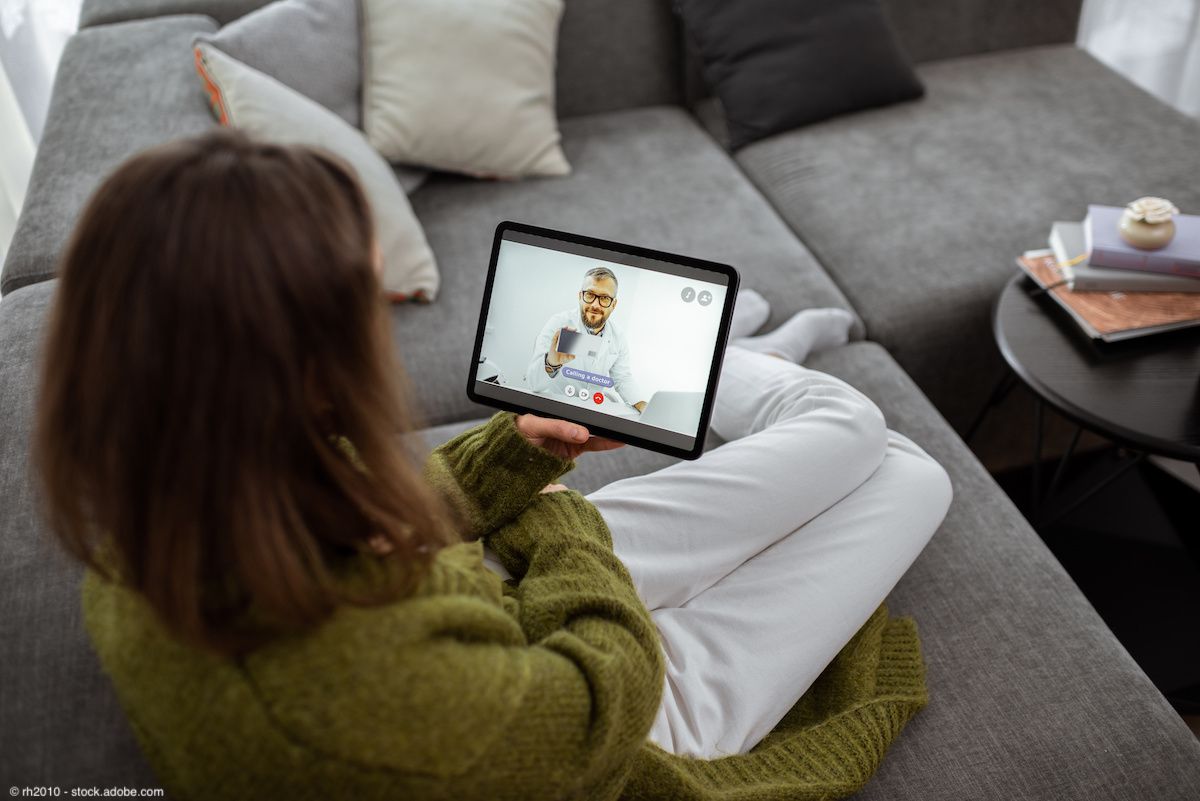Article
Telemedicine is viable option for most early midurethral sling postoperative visits
Author(s):
Outcomes for patients using telemedicine were equal, and patients were as satisfied as those who had office-based postoperative visits.
Telemedicine visits in the early postoperative period after midurethral sling placement are a safe and feasible communication option compared with traditional in-person visits. Outcomes for patients using telemedicine were equal, and patients were as satisfied as those who had office-based postoperative visits, according to an international, prospective, multi-institutional, randomized, controlled trial.
The investigators, who presented their results at the 2020 American Urological Association Virtual Experience,1 randomized a total of 237 patients with a midurethral sling 1:1 to 3-week postoperative telemedicine (by phone) or office-based follow-up visits. They found no differences between the groups for hospital admissions, emergency department visits, and unplanned office visits or calls. Furthermore, about 70% of patients in both groups were very satisfied with their surgical outcomes. Predictors of satisfaction were non-Caucasian ethnicity and no college education.
Sixteen patients (13.2%) using telemedicine follow-up requested crossover to an office follow-up. Most of those patients were older than 65 years. Also, patients in the telemedicine group were more likely than those in the office group to adhere to their 3- to 5-month follow-up visits.
The take-home message for practicing urologists is that not all patients need an office visit for their 3-week follow-up after routine sling or other surgeries, according to study author Samir Derisavifard, MD, who was a urology fellow at Cleveland Clinic in Ohio when he conducted the study and now practices at the USMD Health System in Arlington, Texas. “Only patients who are having complaints or are feeling unwell should come in,” he said. Otherwise, a simple phone call from the physician is just as safe and effective for the 3-week postoperative visit. “It’s a question of resources,” he noted.
Urologists should look carefully at how they use resources in today’s practice for several reasons, according to Derisavifard. Coronavirus disease 2019 exposure is 1 such reason to consider telephone or virtual visits, as is the fact that with reimbursement in a 90-day global period, offices are not reimbursed specifically for the visit. “The data show the office-based visit is not a benefit to the patient and not a benefit to the clinic, so with a phone call, we’re making all the parties happier and running things more efficiently. I think efficiency and quality are the key factors here,” he added.
Patients with a sling are ideal for telemedicine, according to senior author Howard B. Goldman, MD, professor and vice chairman of the Glickman Urological and Kidney Institute at Cleveland Clinic. “We are treating a subjective issue, stress incontinence,” Goldman said. “The patient can easily tell us whether that problem has gone away. The complications that could arise are generally things that patients would notice subjectively. If the sling ended up too tight, they might have trouble urinating. If we ask the right questions, patients can tell us whether that is occurring.”
Another potential complication is exposure of some of the sling in the vagina, which would be an issue if the patient were sexually active and if they or their partner had discomfort in that exposed area. “If they tell us that they had sex and there were no problems and their partner had no issues, that is all we need to know,” Goldman said. “Frankly, if the patient is dry, voiding well, having no pain, and sexually active with no issues, there is really nothing we are going to find on physical exam that we would do anything about.”
Goldman said he uses telemedicine regularly in other areas of urology practice, for patients with an overactive bladder, for example. Telemedicine is ideal for symptom-based conditions, for which an exam is not that important, he said. “However, for something like pelvic organ prolapse, the patient can tell you they feel a vaginal bulge. But you really need an exam to see what it is and decide on appropriate treatment,” he said.
However, barriers exist in implementing telemedicine. Finding the right platform for a seamless experience remains an issue. And patients might take telemedicine visits less seriously, potentially wasting a clinician’s time. Derisavifard said he has had calls with patients while they are cooking or driving.
“Clearly, we are all still understanding the best way to incorporate telemedicine into our practices. Ideally it is most successful when the nature of the visit does not require an examination and the technology and etiquette on both ends of the encounter allow for a professional and productive conversation. Here we are showing that it is possible and should be seriously considered as a viable option moving forward without compromising the quality of care we provide,” Derisavifard concluded.
Reference
1. Derisavifard S, Rueb J, Kocher N, et al. Telemedicine optimizes early post-operative follow up after synthetic mid-urethral sling (MUS): a randomized multi-institutional control trial. Paper presented at: 2020 American Urological Association Virtual Experience; June 27-28, 2020





